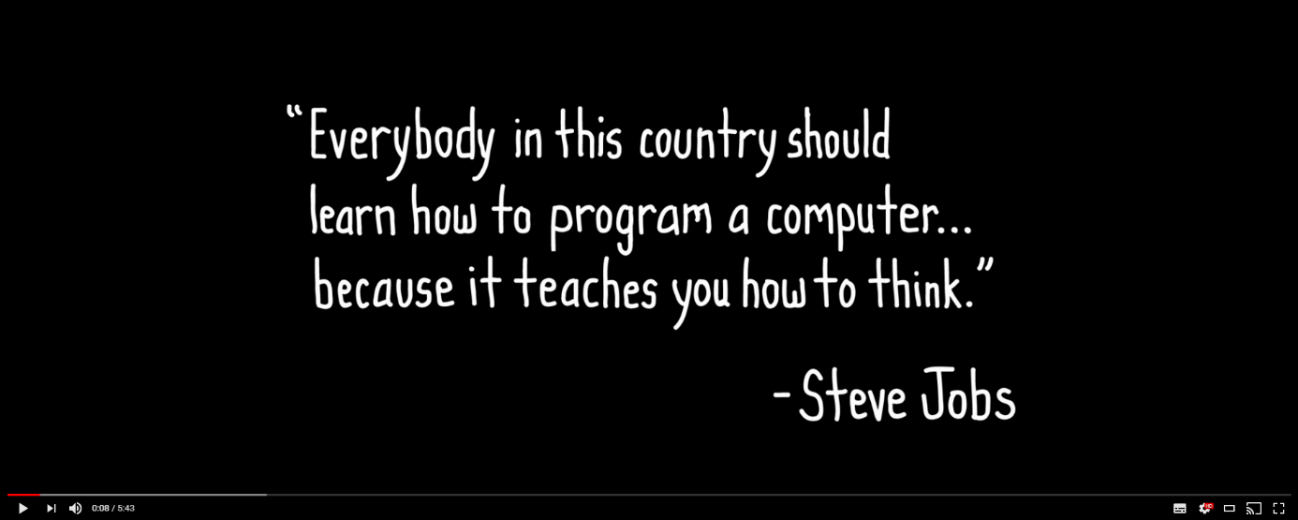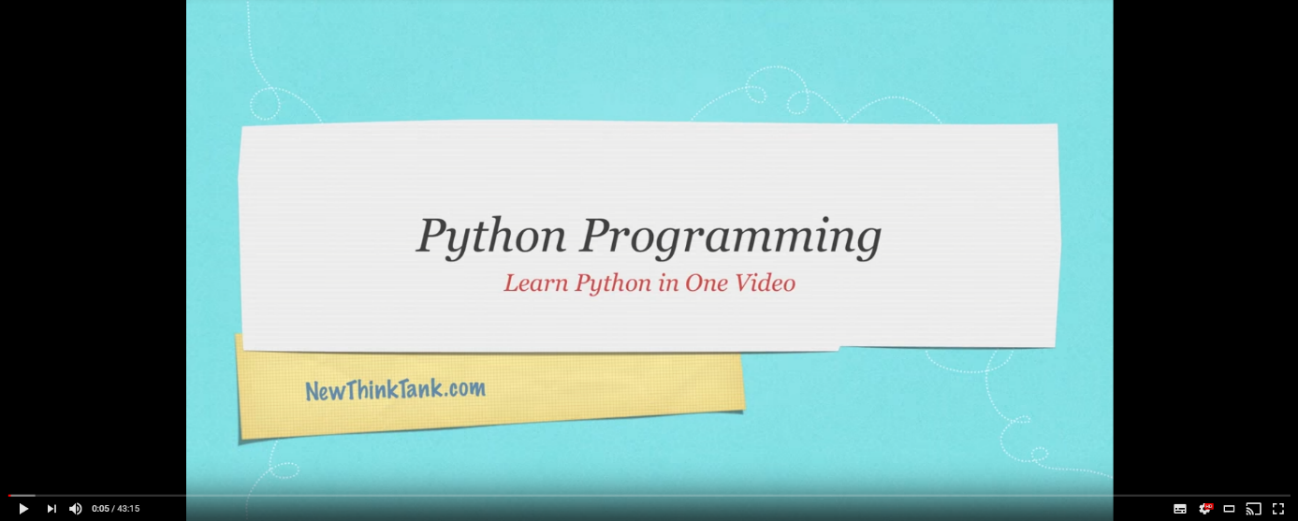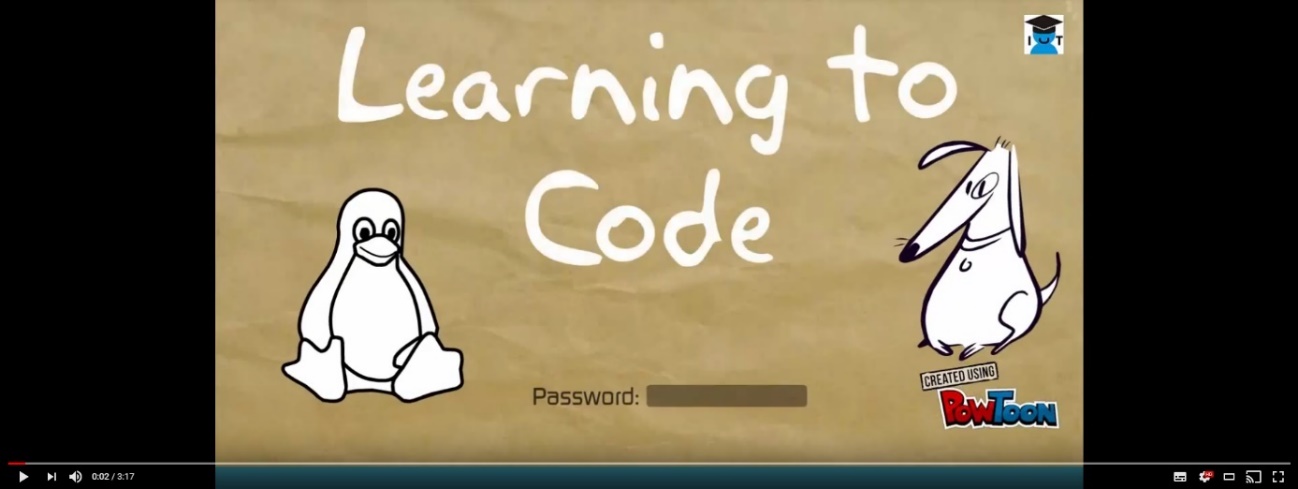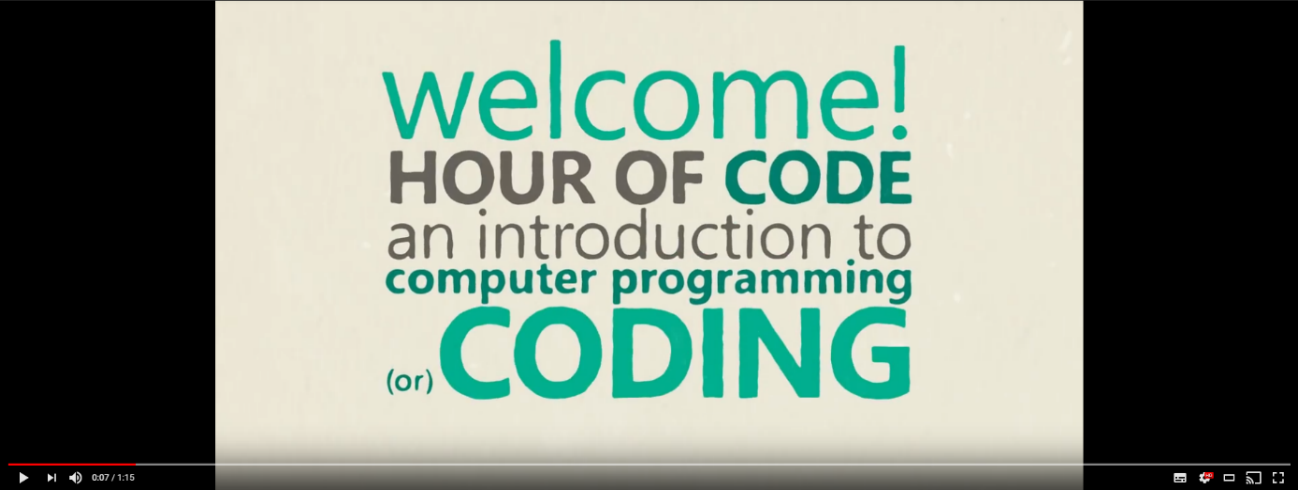Abstract
The paper deals with the motivation of Internet educational videos in computer science. Due to the increasing popularity of Internet videos and the increasing number of users of various social networks, Internet videos seem to be an appropriate element to be included in education in terms of approaching youth of the 21st century. The majority of the videos fulfill only fun features and serve more to fill students' leisure time. However, we can find also ones that can be considered as educational and at the same time we can use them as motivation in education. In connection with the upcoming changes in the curriculum in the Czech Republic, where the emphasis will be put on student creativity and especially on the development of
Keywords: Educational videosmotivationcomputer scienceeducation
Introduction
Watching videos on the Internet is a phenomenon of present time. This activity has become one of the main daily activities of young teenagers over time. According to Alexa server (2018), YouTube is the second most popular web site in the world, and it is even the first in the Czech Republic in terms of popularity.
Except YouTube, there are plenty of other servers for sharing video files, such as for example Vimeo, Dailymotion or SchoolTube. Lots of videos fulfill the fun features and are the biggest attraction for visiting these servers. However, there are also ones having educational character and students can use them as a source of useful information. Using appropriate videos as a motivational element in computer science education could positively contribute to improving the learning process (Klobas, McGill, Moghavvemi, & Paramanathan, 2018; Pratama, Hartanto, & Kusumawardani, 2018).
In our article, we present four educational videos that, in our opinion, can suitably help teachers in computer science education. Our goal is to evaluate their motivation strength and include them in the phase of the learning process. As a source of educational videos, we have chosen two servers. The first is YouTube, whose focus is general. As the secon one, we have chosen SchoolTube, which focuses directly on education.
Motivation
Motivation can be understood as a process of internal justification of the individual's need to learn (Cook & Artino Jr., 2016; Metodický portal RVP, 2011).
However, if we look at the issue of motivation further, we can find two basic concepts in many literary sources. The first is motivation – explaining why one behaves in a certain way; and the other is learning – explaining how behavioral changes take place (Nakonečný, 2013).
These two concepts or also psyche components were separated in the past. Motivation had only the function of energizing and learning the function of behavior focusing. In fact, however, it is empirically proven that motivation is a condition for learning. Emotions are also an important part of this complex process. Reward and punishment are an irreplaceable condition of learning. They are emotional aspects of ongoing activities.
Learning leaves more complete and deeper effect on motivation than on any other mental function of a human. Motivation can also be further divided into
It is always better to build students' internal motivation. Nevertheless, the teacher must select and prepare learning activities, so as to help students with achieving the goals, that will meet their needs. Only then can the student have inner motivation. To support internal motivation, it is advisable to use, for example, problem learning.
In our article, we will introduce such videos that, in our opinion, can help to build students' inner motivation. All the videos will be included in the appropriate phase of the learning process. We have chosen the three-phase learning model
Critical Thinking
Critical thinking can be understood differently (Cholisoh, Fatimah, & Yuniasih, 2015). The definitions in literature differ in many things. However, it is common for all of them, that the method of critical thinking is understood as a tool, thanks to which the student understands the curriculum, discovers the relationship between facts and acquired phenomena, creates his/her own opinion on the problem, and also leads to in-depth curriculum (Zormanová, 2012).
Maňák and Švec add that critical thinking is based on the teachings of constructivist psychology and pedagogy. Thus, the main feature of critical thinking is respecting children's thinking that evolves and changes over time (Maňák & Švec, 2003).
Model
Computational thinking
There are plenty of definitions and approaches to understanding
Educational videos on YouTube as a means of motivation
The beginnings of this social network date back to 2005, when its founders Chad Harley, Steve Chen and Jawed Karim registered this domain. A year later, youtube.com was bought by
Videos shared on
“
The biggest problem may be the availability of suitable educational videos in the mother tongue, i.e. Czech. While it is possible to turn on the subtitles, the machine translation will never be that accurate. Therefore, it is necessary that the teacher choosing the foreign language videos was able to mediate these videos to students and to understand their content, otherwise the choice of such a video will not make sense.
Educational videos on SchoolTube as a means of motivation
This video sharing portal was established in 2007 and is specially created and designed for educators and students. It is written directly on the official site, “
The biggest problem is the availability of videos only in a foreign language (English) and the inability to turn on the machine-translated subtitles, as it is possible with
Problem Statement
One of the important aspects of learning efficiency is motivation. To a great extent, it influences students' attitude towards education, learning about the subject itself and, in general, to gaining new knowledge. With this in mind, the issue of availability and relevance of internet sources becomes a primary consideration as using appropriate videos as a motivational element in computer science education could positively contribute to improving the learning process. The issue is which internet sources are appropriate to fulfil this agenda.
Research Questions
On the basis of studying the literature (Maňák & Švec, 2003; Zormanová, 2012; Nakonečný, 2013; Nakonečný, 2011; NÚV, 2017) and the author’s own considerations, two research questions were formulated. The first is: “
Purpose of the Study
The aim of the article is to examine and analyze web servers for sharing video files and to select the most suitable ones for computer science education, to evaluate their motivational strength and to include them in the learning process. As already mentioned above, we have chosen two servers –
Due to the development of
Research Methods
The analyses of commonly available video files suitable for computer science, namely programming and algorithmization was used as the research method (Chráska, 2006).
Findings
There is a huge sum of internet educational videos available. Many of them are aimed at teenagers and serve only to entertain and fill their free time. However, we also found a large number of useful and quality educational videos suitable for teaching of computer science, that, in our opinion, have sufficient motivational strength to be used by teachers in their lessons. For our article and illustration of the suitable educational videos, we finally selected the four following videos based on the analysis.
Video no. 1: What Most Schools Don't Teach
This video (Code.org, 2013) was placed on
The environment of a large foreign company in which programmers work is also nicely introduced. Various benefits, open space offices, etc. are shown here. At the end, there is a link to
By presenting of a promising and well-paid job – the programmer, and especially by emphasizing the fact that really everyone can program, the student's inner motivation can be developed and we can awaken the desire for further education in this area. So, in our opinion, it is a strong motivational video.

Video no. 2: Python Programming
The video can serve well in the phase 2 – awareness of meaning. Students get a well-commented explanation directly accompanied by writing the code on the left side of the screen and directly interpreting the result on the right. The teacher himself can go through all the parts of the video, pause over more complex passages and complement his/her own knowledge and commentary.
We believe that thanks to the fact that it takes only a 43-minute video to acquire the basics of the

Video no. 3: Learn Computer Code – Primary School Education
This video was added in 2016 by the user ICT Tools for Teachers (2016). It is rather for teachers than students, but can be suitably used in the evocation phase of the learning model. Some key skills are presented here, that should be included in the educational content, so as the pupils can learn programing more easily. Great emphasis is put on algorithms that are the basis for programming and at school, they can be taught in connection with common life situations such as cake baking, dog bathing or washing. Also other tools for the development of algorithmic thinking (such as
A big benefit are the references to other materials related to computing at school, such as teacher manuals etc.
Through video, students find that algorithms are found in lives of each of us and that we apply them to everyday activities basically all the time. At this point, it would be possible to use the method of
Video can be used as an element of motivation in teaching. However, it only depends on the teacher, how the teaching will continue after seing this video.

Video no. 4: What is coding?
The video titled “What is coding” (microsoftlearning, 2014) has a footprint of just one minute and fifteen seconds, but as an initial motivation for the first lesson of programming, it is, in our opinion, very useful.
The video is graphically nicely processed and it shows the viewer in a short interval of time how the code is an integral part of today's world.
Students can then perceive programming as a means to their better future, as programming/coding is the future. We think that students' inner motivation can be developed by demonstrating that we teach them something meaningful at school, something with future, and that can be beneficial for students themselves from multiple points of view.

Conclusion
When searching and analyzing educational videos, the focus was on
All of the videos introduced in this article were published in 2016, 2014 and 2013. No current video from this year was available for use as a motivational element in computer science.
Most of the videos on
Based on the results of the author’s surveys and experience, the inclusion of the Internet educational videos mentioned in this article can make a very positive contribution to enhancing the quality of computer science, not only in the form of motivation but also as a component of understanding the subject itself. An obstacle to more global use may be English language of the video, or the poor machine translation of subtitles into the Czech language and, for example, a poor understanding of the problem presented.
The most important element of motivation are not only the videos themselves, but it is the teacher himself and his concept of teaching. Videos are only a suitable tool.
Acknowledgments
This article was created with the support of the project IGA_PdF_2018_015 Possibilities of Information and educational video component to increase motivation in education.
References
- Alexa Internet, Inc. (2018). The top 500 sites on the web. Retrieved from https://www.alexa.com/topsites
- Cholisoh, L., Fatimah, S., & Yuniasih, F. (2015). Critical thinking skill in integrated science learning viewed from learning motivation. Jurnal Pendidikan Fisika Indonesia, 11(2), 134-141.
- Chráska, M. (2006). Úvod do výzkumu v pedagogice [Introduction to research in pedagogy]. Praha: Grada.
- Čížek, J. (2015). YouTube.com slaví desáté výročí [YouTube.com celebrates its tenth anniversary]. O počítačích, IT a internetu – živě.cz. Retrieved from https://www.zive.cz/clanky/youtubecom-slavi-desate-vyroci/sc-3-a-177170/default.aspx
- Code.org. (2013). What Most Schools Don't Teach. Retrieved from https://www.youtube.com/ watch?v=nKIu9yen5nc
- Cook, D. A., & Artino Jr., A. R. (2016). Motivation to learn: an overview of contemporary theories. Medical education, 50(10), 997-1014. Retrieved from https://onlinelibrary.wiley.com/doi/abs/ 10.1111/medu.13074
- Banas, D. (2014). Python Programming. Retrieved from https://www.youtube.com/watch? v=N4mEzFDjqtA
- Google. (2016). Exploring Computational thinking. Retrieved from https://edu.google.com/resources/ programs/exploring-computational-thinking/
- ICT Tools for Teachers. (2016). Learn Computer Code – Primary School Education. Retrieved from https://www.youtube.com/watch?v=MRPpYX8SOA8
- Klobas, J. E., McGill, T. J., & Moghavvemi, S., & Paramanathan, T. (2018). Compulsive YouTube usage: A comparison of use motivation and personality effects. Computers in Human Behavior, 87, 129-139. Retrieved from http://dx.doi.org/10.1016/j.chb.2018.05.038
- Maňák. J., & Švec, V. (2003). Výukové metody [Teaching methods]. Brno: Paido.
- Metodický portal RVP. (2011). Motivace [Motivation]. Retrieved from https://wiki.rvp.cz/Knihovna/1.Pedagogicky_lexikon/M/Motivace
- microsoftlearning. (2014). What is coding? Retrieved from https://www.youtube.com/watch?v =cKhVupvyhKk
- MŠMT. (2018). Revize ICT kurikula, rok dva [Review of ICT curriculum, year two]. Retrieved from http://www.msmt.cz/uploads/SDV2/Revize_ICT_kurikula_rok_dva.pdf
- Nakonečný, M. (2011). Psychologie – přehled základních oborů [Psychology - overview of basic disciplines]. Praha: Triton.
- Nakonečný, M. (2013). Lexikon psychologie [Lexicon of Psychology]. Praha: Vodnář.
- NÚV. (2017). Revize ICT kurikula [Revision of ICT curriculum]. Retrieved from https://digifolio.rvp.cz/artefact/file/download.php?file=78947&view=13123
- Pratama, Y., Hartanto, R., & Kusumawardani, S. S. (2018). Validating YouTube Factors Affecting Learning Performance. IOP Conference Series: Materials Science and Engineering, 325(1). Retrieved from http://iopscience.iop.org/article/10.1088/1757-899X/325/1/012003/meta
- SchoolTube. (2018). About SchoolTube. Retrieved from https://www.schooltube.com/info/about
- Meredith, K., Steele, J. L., Temple, K., & Walter, S. (1997). Příručky k programu Čtením a psaním ke kritickému myšlení 1-8 [Manuals for the program Reading and Writing for Critical Thinking 1-8]. Praha: Kritické myšlení.
- YouTube. (2018). YouTube v číslech [YouTube in numbers]. Retrieved from https://www.youtube.com/ intl/cs/yt/about/press/
- Zormanová, L. (2012). Výukové metody v pedagogice: tradiční a inovativní metody, transmisivní a konstruktivistické pojetí výuky, klasifikace výukových metod [Teaching Methods in Pedagogy: Traditional and Innovative Methods, Transmissive and Constructivist Concepts of Teaching, Classification of Teaching Methods]. Praha: Grada.
Copyright information

This work is licensed under a Creative Commons Attribution-NonCommercial-NoDerivatives 4.0 International License.
About this article
Publication Date
14 January 2019
Article Doi
eBook ISBN
978-1-80296-052-5
Publisher
Future Academy
Volume
53
Print ISBN (optional)
-
Edition Number
1st Edition
Pages
1-812
Subjects
Education, educational psychology, counselling psychology
Cite this article as:
Dragon, T. (2019). Possibilities Of Using Internet Educational Videos For Motivation In Computer Science Education. In Z. Bekirogullari, M. Y. Minas, & R. X. Thambusamy (Eds.), ICEEPSY 2018: Education and Educational Psychology, vol 53. European Proceedings of Social and Behavioural Sciences (pp. 135-144). Future Academy. https://doi.org/10.15405/epsbs.2019.01.13

